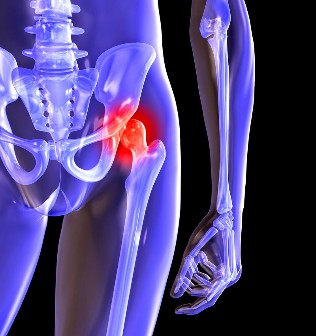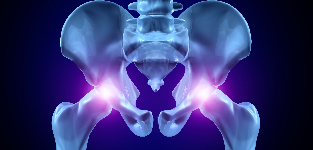Osteoarthritis of the hip — and on the other hand, degenerative pathology, which is characterized by destruction of hyaline cartilage. The disease develops gradually, accompanied by an armbar syndrome and the decreased amplitude of movement. In the absence of medical act at the initial stage of osteoarthritis, after several years, there is atrophy of the muscles femoral. A leg smaller, and fusing the joint of the slit leads to the release of partial or total paralysis of the hip. The causes of the pathology prior to the injury, the curvature of the spine, the system of diseases of the locomotor apparatus.

Osteoarthritis usually is diagnosed in patients of middle age and older. The diagnosis is negotiated on the basis of the results of tools of research of the x-ray, magnetic resonance imaging, computed tomography, arthroscopy. The treatment of the pathology of 1 and 2 degree of severity of the conservative. When it detects an ankylosis or of the ineffectiveness of the medication therapy the surgery is performed (arthrodesis, arthroplasty).
The mechanism of development of pathology
The hip joint formed by two bones, iliac and femoral. Lower department of ilion presented by your body, which participates in the plexus with the thigh, which form the upper part of the division of the acetabulum. During the march joint fovea stationary, and the femoral head moves freely. What is the "joint" the unity of the hip joint allows you to bend, stretch, turn, contributes to the extraction, the adequacy of the hip. Gliding without resistance of the joint structures provides smooth, elastic, elastic, hyaline cartilage, lining of the cavity and the head of the femur. Its main functions — the redistribution of loads in motion, the rapid alert, the wear and tear of bone tissues.

Under the effects of external or internal factors is broken trophic cartilage. Does not have its own circulatory system — nutrients of the fabric supplies the fluid. Osteoarthritis is thick, it becomes viscous. Arisen from the deficiency of nutrients causes the drying of the surface of the hyaline cartilage. Is covered in cracks, which leads to a permanent micro lesions of tissues in flexion or right extension of the hip. The cartilage thinning, lose their depreciation of the properties. To "adapt" to an increase of the pressure, deform the bones. And in the background of the deterioration of the metabolism in the tissues progress destructively-degenerative changes.
Causes and triggers of the
Idiopathic or primary osteoarthritis occurs without any type of reasons. It is considered that the destruction of the cartilage tissue is produced by the natural aging of the body, of the slowing of the restoration of processes, the reduction of the production of collagen and other compounds needed for the complete regeneration of the structures of the hip. Secondary osteoarthritis occurs in the background already present in the body of the condition. The most common of the reasons of the secondary of the disease are:
- preceding the injury — damage tendon apparatus, breaks muscle, its complete separation from the bone marrow of the foundation, fractures, dislocations;
- developmental disorder of the joint, congenital dysplastic disorder;
- autoimmune pathology — rheumatoid, reactive, psoriatic arthritis, systemic lupus erythematosus;
- nonspecific inflammatory disease, such as arthritis purulenta;
- specific infections of gonorrhea, syphilis, brucellosis, ureaplasmosis, trichomoniasis, tuberculosis, osteomyelitis, encephalitis;
- disruption of the functioning of the endocrine system;
- specific pathology — osteochondropathy of the femoral head;
- hypermobility of the joints, conditional on the development of a "super-extensible" of collagen, causing an excess of mobility, weakness of the ligaments.
As well as the cause of the development of osteoarthritis may be hemarthrosis (bleeding in the cavity of the hip), the causing factors lead to violations of hematopoiesis. Requirements prior to the onset of the disease are excess weight, excess of physical exercise, sedentary life style. For its development, lead to incorrect organization of sports training, the deficit in the diet of food with high content of trace elements, giraud - and water-soluble vitamins. Postoperatsionniy osteoarthritis occurs after several years after the surgery, especially if it is accompanied by the incisin of a large volume of tissue. Osteoarthritis of the hip, can not be transmitted by inheritance. But if you have certain innate characteristics (alteration of metabolism, the structure of the skeleton), the likelihood of developing increases significantly.
The symptoms of the
The main symptoms of osteoarthritis of the hip — pain when walking in the area of the hip, knee at a right angle. The person suffers from stiffness, the stiffness, especially in the morning hours. To stabilize the joint, the patient begins to limp, change your gait. With the time, due to muscle atrophy and deformation of the articulation of finitude is markedly reduced. Another hallmark symptom of the pathology is the limitation of the derivation of the hip. For example, the difficulties that arise when trying to sit on the stool, opening her legs from side to side.

Even in the "cast" of the OSTEOARTHRITIS can be cured at home! Simply do not forget times in the day the stain of this...
For osteoarthritis of first degree of severity of the characterized periodic pain, occur after vigorous exercise. They are located in the area of the joint and disappear after a prolonged rest.
Osteoarthritis of the second degree of the hip of the connection of the intensity of the pain syndrome grows. The feelings of discomfort arise even in a resting state, are distributed in the thigh and the groin, are intensified during the rise of the severity or the increase of the motor activity. To resolve the problem of pain in the hip joint, the man begins to barely visible limp. It points out the limitation of movement in the joint, especially when lead and internal rotation of the hip.
Osteoarthritis of third grade is characterized by constant and severe pain. When the movement has some difficulty, so that when walking, the man is forced to use a cane or crutches. Due to the weakness of the outlet femoral muscles occurs the displacement of the bones of the pelvis in the frontal plane. For the compensation of the occurred the shortening of the leg ill on the road is tilted to one side of the injured limb. This causes a strong displacement of the center of gravity and the rising pressure in right angle. At this stage of the osteoarthritis develops expressed ankylosis of the joint.
| The degree of | Radiographic signs |
| The first | The changes do not express themselves dramatically. Articulate the cleft moderately decreased unevenly, lack of a disintegration of the surface of the bone of the thigh. In the outer or inner edge of the acetabulum is observed under bony expansion of the |
| The second | The height of the joint of the slit significantly reduced due to the uneven buildup. Bone, femoral head has moved upward, distorted, augmented, their contours becomes uneven. The bone spurs that form in the inner and outer surface of the edges of the joint of the fovea |
| The third | It is observed, partial or total fusion of the joint of the slit. The head of the femur) greatly enlarged. Multiple outgrowths of bone are found on all surfaces of the acetabulum |
The diagnosis
During the placement of a diagnosis, the doctor takes into account the clinical manifestations of the pathology, clinical history, the results of the external inspection of the patient and of research instruments. The more informative the x-ray. With your help, it assesses the state of the hip, a stage is provided of its power, the degree of damage the cartilage tissue and, in some cases, and the cause of development. If the cervical-diaphyseal node increased, and vertluzhnoj the cavity beveled and flattened, with large probability, it can be assumed dysplastic defects of the changes of the joint. In perthes disease indicates broken the shape of the bones of the hip. The x-ray allows vyvit post-traumatic osteoarthritis, despite the absence of a history previous to the illness of injury. Also use other diagnostic methods:
- The ct scan helps to detect the expansion of the bone edges of the disks that have the osteophytes;
- Magnetic resonance imaging was performed to evaluate the state of connective tissue structures and the degree of their involvement in a pathological process.
If necessary, the inner surface of the joint is examined with the arthroscopic tools. The differential diagnosis is conducted with the purpose of exception of knee osteoarthritis, lumbar-sacrum or degenerative disc disease. The pain of osteoarthritis can masquerade under the clinical manifestations of radicular syndrome caused by the violation or the inflammation of the nerve. To exclude neurogenic pathology generally is achieved with the help of a series of tests. Osteoarthritis of the hip necessarily differentiated, high-bursitis of hip, disease behtereva, reactive, arthritis. To the exclusion of autoimmune disorders are performed biochemical investigations of the blood and the synovial fluid.
The surgical intervention
The ineffectiveness of conservative therapy of il difficult diagnosis pathology the operation is being performed. To restore the cartilage, shaving the fabric in the damaged joint, osteoarthritis), without the operation of placement of the prosthesis is impossible, but with the right approach to treatment, the fulfillment of all medical prescriptions, led by a healthy lifestyle, the medicinal use of the gym, the ordinary courses of massage, reception of vitamins, and competent, the nutrition you can stop the process of the defeat and destruction of the cartilage and hip joints.































